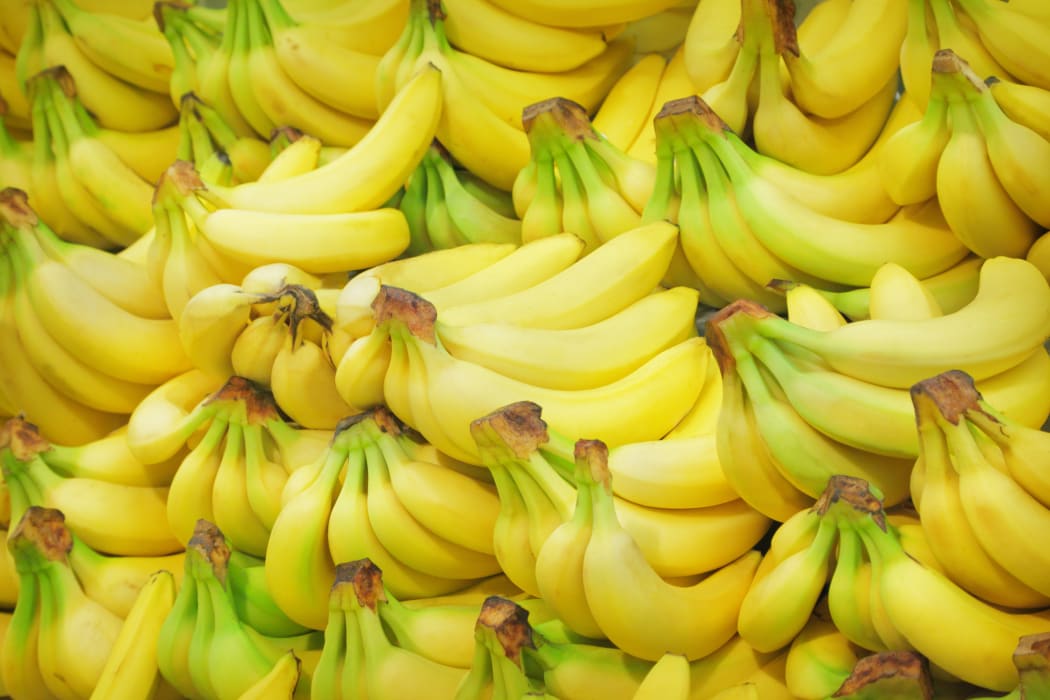Bananas are New Zealand’s most popular fruit - each of us eating 18kg of them a year on average.
While there are more than 800 varieties available throughout the world, the Cavendish is the world’s - and New Zealand’s - most popular. It accounts for half of all bananas grown anywhere and 99 percent of export bananas out of South America.
But there are fears our beloved Cavendish won’t actually be around for much longer.

Photo: 123RF
Dr. Angelina Sanderson Bellamy, an ecologist and a research fellow at Cardiff University, told Jim Mora an advertising campaign carried out by Chiquita in the 1930s and 40s introduced bananas to the northern American market.
Jingles that were played on radio acted as instructions for how to eat a banana.
In the 1930s, a banana variety that was yellow when unripe hit the market but proved unpopular with consumers, in part because you had to wait until it turned black until it was sweet and ready to eat.
“Consumers refused to buy black bananas.”
Bananas breed asexually, making it very difficult to create new varieties, says Sanderson Bellamy.
“If you go way back in time to…the origins of bananas, they actually had really really large seeds and there wasn’t very much flesh in the fruit to consume.”
Every banana that is reproduced is actually a genetic clone of itself, she says, they don’t produce a seed anymore.
“The earlier variety of bananas that used to go to market was…plagued by a strain of Panama disease and Tropical Race 1 is was called… a soil based disease.”
As soon as the disease infects the soil it wipes out the crop. It also lives in the soil for decades, says Sanderson Bellamy.
“Your only option really is to abandon the farm.”
While we may love the Cavendish here, Sanderson Bellamy says when she’s talked to Costa Ricans they can’t understand why we like them, they’re not nearly as sweet as other varieties.
“It’s hard to say why we don’t get more variability of bananas in the stores because they do exist, they’re just not being exported and I think then you have the rolls of the multinationals who really dominate the export market and that’s Dole, Del Monte and Chiquita.”
She says a lot of the banana food supply chain is vertically integrated, meaning multinationals exercise a lot of control.
In Costa Rica, 50 percent of the land is owned by one of these multinationals, the independent producers who own the other land sell their product to the multinationals. The multinationals own boats to export the bananas and facilities where they ripen, she says.
“I think if you wanted to introduce another variety of bananas to the market, partly they’re thinking well no, we’ve adapted our production system and the boxes and the shipping containers to the Cavendish variety and so to diversify would complicate their business from a management perspective.”
The way we’re growing Cavendish is a bigger problem than the diseases they are susceptible to, she says.
“For the export market, the Cavendish banana is grown on these very, very large scale monoculture farms, typically between 100 and 1000 hectares, that is just banana plants. Then on top of that, they’re genetically identical, so what you’ve got is a huge buffet feast for various pests and pathogens.”
Synthetic fertilisers kill a lot of the healthy organisms in the soil, she says, which is what these big plantations use.
Sanderson Bellamy says all food needs to be grown in a diverse system with various different crops and insects which work together in harmony.
And if you think your pocket is taking a hit when you’re buying bananas, Sanderson Bellamy says she thinks they’re not expensive enough, and the cost at the supermarket doesn’t fairly represent the cost it takes to produce them.
“I think we need a bit of a system change in the way that we produce the bananas and the way that we bring them to market and the value that we put on the bananas."

